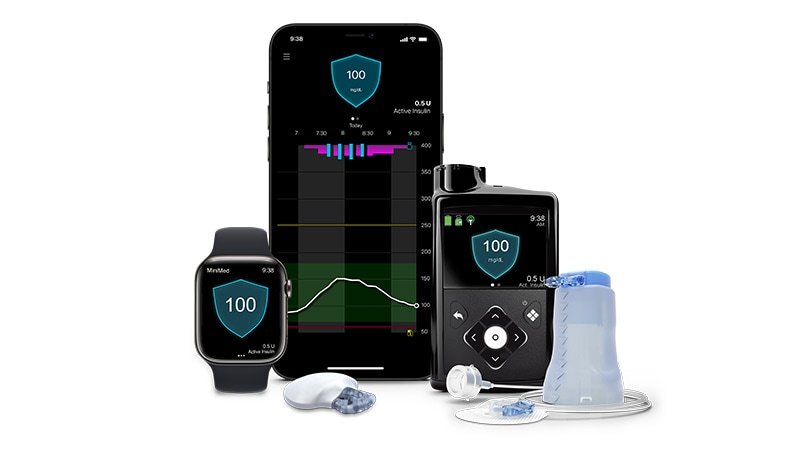One patient of mine spent most of his first year of life admitted to a neonatal intensive care unit. His mother joked, "Considering everything, waiting to get growth hormone approved for him was one of the hardest things we have had to endure." Though this was clearly hyperbole, her frustrations were understandable.
Barriers to medications have plagued every medical specialty, but I'd venture that few specialties have been as impacted recently as pediatric endocrinology.
 Jessica Sparks Lilley, MD
Jessica Sparks Lilley, MDInsulin prices remain astronomical, and we worry about patients losing insurance coverage as they enter young adulthood. The medications we prescribe, from puberty blockers to glucagon-like peptide 1 receptor agonists to growth hormone, often have been vexed by manufacturing shortages. Patients must secure appointments with us to even hope to access these medications, a feat that often takes several months owing to workforce shortages.
These are battles we're prepared to fight, but we often feel as if we're going to war with both hands tied behind our backs. Often our treatment plans aren't predicated on the latest evidence or in the best interest of our vulnerable patients. These medical decisions are dictated by insurance companies.
New criteria are added constantly without regard to any published guidelines or accepted standards of care. Or, in a more troublesome example, sometimes insurance companies require patients to jump through hoops that are downright dangerous. Case in point: growth hormone stimulation testing. "Stim testing" evolved in the late 1960s from the knowledge that stress triggered growth hormone release.
Dangers Beyond Delays
Before the availability of accurate growth factor testing, particularly insulin-like growth factor 1 and insulin-like growth factor binding protein 3, the observation that induced hypoglycemia caused measurable increases in growth hormone was applied to diagnose growth hormone deficiency. Testing protocols were given to administer insulin and other secretagogues, such as arginine and clonidine, to measure growth hormone response.
While sometimes growth hormone stimulation testing is necessary, not all indications for growth hormone treatment require it. Furthermore, stim tests can have poor accuracy, precision, and specificity. Other pediatric endocrinology tools of the same era — skull films and testing for 24-hour urine metabolites — have given way to MRI and sophisticated assays for growth factors. Yet pediatric endocrinologists are faced with rubber-stamped denials if stimulation testing results are not submitted along with prior authorization (PA) requests for growth hormone treatment, even for indications that don’t require this diagnostic procedure.
Growth hormone stimulation testing is a miserable experience for the patient: It lasts for several hours, requires placement of an intravenous line and administering medications with side effects, and traps the patient and family in a room for serial blood collections while denying the child food. It's also expensive — the total cost is often over $1000 for medications, use of the facility, and lab tests.
And most importantly, it can be dangerous. Seizures can occur in the course of hypoglycemia induced by testing. One little boy died of an accidental arginine overdose during a stim test in 2009. The loss of life through provocative testing is too high a price to demand to "prove" a clear clinical diagnosis.
Caregivers Feeling the Stress
Other barriers to medication imposed by insurance companies are ridiculous. Examples I've seen include repeating a C-peptide level in a child with established type 1 diabetes years into pump therapy; doing a sedated MRI for older girls with precocious puberty who had low pretreatment probability of a central nervous system lesion; and having a patient return for expensive, medically unnecessary, and expensive esoteric lab testing.
The ordeal of gaining insurance approval for patient care is well-known and is often discussed in groups of medical professionals, but patients often cannot believe just how arduous the task can be. Surely their physician is going about this the wrong way ("the pharmacy said the physician's office just needed to complete a 'simple' PA for the desired treatment"). These PAs are multiple pages long, require expertise to be completed, and are a huge driver of overheads in our clinics and hospitals owing to the number of employee hours that must be devoted to them.
These delays jeopardize the health and well-being of the children who come to me for care. The barriers strongly contribute to abuse of physicians and our staffs; according to recent data from the American Medical Association, pediatric specialists are among the top 10 for burnout rates in physicians in the United States, with nearly 30% reporting this disastrous outcome.
Sometimes I wonder to myself whether I need to start writing "pretty please" or "open sesame" on my prescriptions. Though I gave up my 20s and spent over a decade in medical training and research, I often feel as though I’m reduced to begging from insurance companies who de facto practice medicine without a license of qualifications to do so.
I understand that exorbitant drug costs drive these requirements. The out-of-pocket cost of 1 year of growth hormone runs into tens of thousands of dollars. One 3-month course of gonadotropin-releasing hormone agonist to delay puberty would set patients back over $2000 without insurance coverage or patient assistance.
The negotiated prices to insurance companies vary wildly, and the brand or method of treatment is often dictated by what is actually affordable and on formulary. While we grumble and strain against insurance requirements, runaway costs of medications have their own drivers that are not regulated by usual economic forces, a topic that I look forward to addressing in a future article.
Even if I can secure approval and payment for the medications I prescribe, finding them in pharmacies has been an added hurdle. A widely publicized growth hormone shortage has compromised the care and safety of my patients while simultaneously driving up our mountains of paperwork. We have to fill out new PAs for different brands and concentrations of growth hormones as we chase in-stock options, often spending hours on each patient. And if you want to break the heart of any endocrinologist, just mention trying to find glucagon-like peptide 1 receptor agonists (GLP-1 RAs) for patients who need them. I could easily hire an additional professional solely to deal with PAs and denials and finding medication for patients, a ludicrous reality in a time of chronic understaffing and decreasing reimbursements for our services, considering that this considerable time and effort is uncompensated while insurance profits soar.
Meanwhile, I want to return to caring for children with endocrine conditions and diabetes, not filling out paperwork for their medications, groveling on a peer-to-peer call with a physician outside my specialty, or explaining to worried parents why they don't have their child's medication yet. We need to take these conversations out of our breakrooms and online support groups and work to bring about meaningful change.

.webp) 2 weeks ago
6
2 weeks ago
6
























 English (US)
English (US)